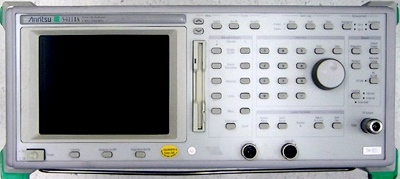
|
|
Anritsu 54131A 10 GHz to 16 GHz, Scalar Network Analyzer. Measurement Modes: Transmission (dB), Return Loss (dB), Precision Return Loss (dB), SWR (linear SWR), Power (dBm), optional Distance-To-Fault (feet or meters) and Relative Group Delay (ns). Analyzer; Dynamic Range: -55 dBm to +16 dBm, Autozeroing implements AC detection on a single cycle per sweep basis using Anritsu 560 Series or 5400 Series Detectors and SWR Autotesters. Inputs: Three. Two standard inputs, A and B, with an optional third reference channel, R. Channels: Two channels are used to select and simultaneously display any two inputs from A, B, or R. The inputs can also be displayed as ratios A/R or B/R. Display Resolution: Horizontal: 51, 101, 201, or 401 points; Vertical: 0.025 dB, 0.0025 ns. Vertical Scaling: Resolution: 0.1 dB(m) to 10 dB(m) per division. Independent control for each channel 0.1 to 100 ns per division. Offset range: -99.9 dB to +99.9 dB, -99.9 to +99.9 ns. Averaging: 2, 4, 8, 16, 32, 64, 128, or 256 successive traces may be averaged together to remove unwanted noise. Channels may be independently set. Source; Frequency Range: 10 GHz to 16 GHz. Frequency Resolution: ±100 kHz. Start Frequency Accuracy: ±200 kHz Sweep Time, Single Band: Typically less than 70 ms for single channel with 101 point horizontal resolution, depending on frequency, averaging, and smoothing settings. Trace update time is typically 130 ms with similar system settings. Power Level Accuracy: ±1 dB, leveled. ±3.0 dB for models above 20 GHz, and ± 4.0 dB for 50 GHz models. Add ±0.2 dB for Option 4-75 ohm output. Power Level Accuracy, Attenuator: Optional 70 dB Step Attenuator (10 dB steps). Leveled power accuracy degrades by ±1.5 dB. Interface: IEEE-488.2 compliant interface with integrated GPIB Plotter Control is standard. Option 2, 70 dB RF Step Attenuator. Option 5, Add Reference Channel. Option 6, Add External Leveling. Option 7, Internal Distance-To-Fault Software. Option 8, Relative Group Delay Software.
|